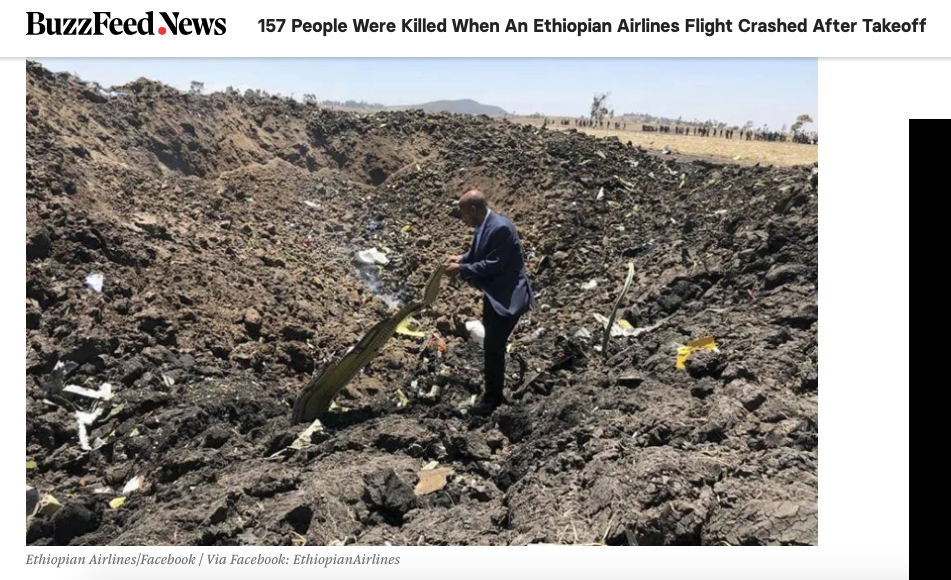
Written by Maria Gil
Buzzfeed’s coverage of the Ethiopian airplane crash would be considered below average if you were to compare it the New York Time’s coverage of the same incident.
One of the main problems was that Buzzfeed failed to caption their two images. This made me confused about who the people in the images were. For example, in the first image, there is a woman on the phone and she appears distressed. Who is she? Why is she distressed? Was a family or friend on the plane that crashed? Is she trying to find out if the person she is waiting at the airport is safe? If the reporter, Nidhi Subbaraman, would have supplied that I would have felt more of a connection to the woman. The second image there is a man wearing a suit in the midst of the rumble. Same questions: who is he, what is he doing?


The piece was also missing a very crucial hyperlink to an important source. I would have included a link to a video of the press conference by Ethiopian Airlines CEO Tewolde Genremariam. It was quickly found on Youtube, but it would have been more user-friendly if Buzzfeed hyperlinked to it instead.






Great observations Maria, particularly about the press conference, if that video was available at the time of publication. We have no timestamp on those videos so it’s hard to know. Yes, definitely these images need captions, and it’s a dismissive colonial gesture not to identify these people. Also as Ras noted, the alt text is missing. I also think the use of the tweets throughout could have been better managed. Linking bulletin 2 from Ethiopian airlines, and then embedding bulletin 1 is putting the emphasis on the less important information, the earlier details. The reporter’s not always using keywords for link phrases either, although the attribution of links is generally good. On your practice, good use of the medium. You don’t need the extra introductory byline, as there’s already one at the top and bottom of your story thanks to the story template.